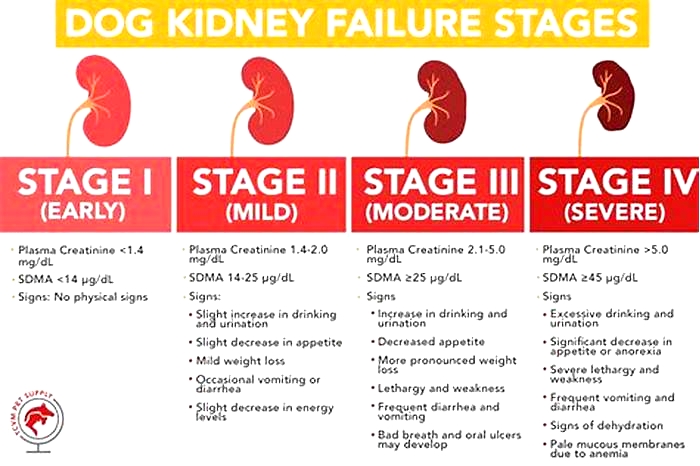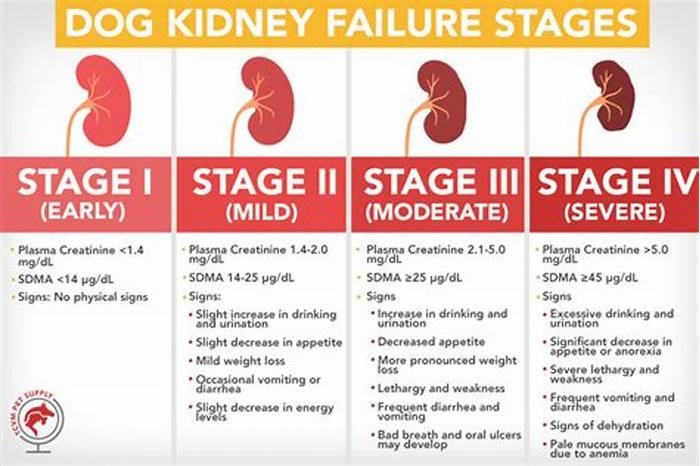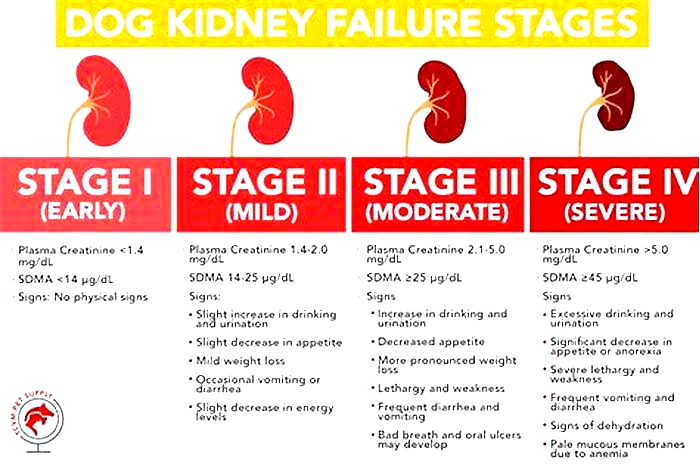diet for dogs with high kidney levels

How to Lower Sdma in Dogs
SDMA, also known as symmetric dimethylarginine, is a novel biomarker that provides valuable information about kidney function in dogs. Understanding SDMA levels and their implications is crucial for maintaining the overall health and well-being of our furry companions. In this article, we will delve into the world of SDMA, exploring its importance, common causes of high levels, its impact on a dogs health, and various strategies to lower SDMA levels in dogs.
Understanding SDMA levels in dogs
SDMA is a molecule that is produced during the breakdown of proteins in the body. Unlike other kidney function markers such as creatinine, SDMA is less influenced by muscle mass, making it a more reliable indicator of kidney health. Elevated levels of SDMA in the bloodstream are indicative of reduced kidney function, suggesting the presence of kidney disease or damage.
SDMA levels can be measured through a simple blood test, providing crucial insights into a dogs renal health. Regular monitoring of SDMA levels is essential, especially for senior dogs, as it allows for early detection and intervention in cases of kidney dysfunction.
It is important to note that SDMA levels can also be affected by factors other than kidney function. Certain medications, such as nonsteroidal anti-inflammatory drugs (NSAIDs), can cause temporary increases in SDMA levels. Additionally, dehydration can lead to higher SDMA levels, so it is crucial to ensure that the dog is properly hydrated before conducting the blood test.
In addition to monitoring SDMA levels, other diagnostic tests, such as urine analysis and imaging studies, may be necessary to fully evaluate a dogs renal health. These tests can provide further information about the extent of kidney damage and help guide treatment decisions. It is important to work closely with a veterinarian to develop a comprehensive diagnostic and treatment plan for dogs with suspected kidney dysfunction.
What is SDMA and why is it important?
SDMA plays a vital role in the early detection and management of kidney disease in dogs. The kidneys are responsible for filtering waste products from the bloodstream, and when the kidneys are not functioning properly, these waste products, including SDMA, can accumulate, resulting in elevated levels in the blood.
By measuring SDMA, veterinarians can identify kidney disease at an earlier stage than previously possible. This early detection enables prompt intervention and treatment, potentially slowing disease progression and improving the overall prognosis for our beloved pets.
Furthermore, SDMA levels have been found to be a more sensitive indicator of kidney function compared to traditional markers such as creatinine. This means that SDMA can detect kidney disease even before significant damage has occurred, allowing for earlier intervention and better outcomes.
In addition to its role in detecting kidney disease, SDMA can also be used to monitor the progression of the disease and the effectiveness of treatment. Regular monitoring of SDMA levels can help veterinarians adjust treatment plans and make informed decisions about the management of the disease.
Common causes of high SDMA in dogs
Elevated SDMA levels can be attributed to various factors, including but not limited to:
- Chronic kidney disease (CKD)
- Acute kidney injury (AKI)
- Urinary tract infections
- Dehydration
- High blood pressure
It is important to note that elevated SDMA levels do not provide a specific diagnosis but serve as an indicator that further investigation is required to identify the underlying cause.
The impact of high SDMA on a dogs health
Elevated SDMA levels can have significant consequences for a dogs health. The kidneys play a crucial role in maintaining the balance of fluids and electrolytes, filtering waste products, and producing important hormones. When kidney function is compromised, these essential functions are impaired, leading to a range of complications.
Some common health issues associated with high SDMA levels in dogs include:
- Increased thirst and excessive urination
- Loss of appetite and weight loss
- Fatigue and weakness
- Decreased urine output
- Fluid retention and swelling
If left untreated, high SDMA levels can progress to advanced kidney disease, causing irreversible damage and significantly impacting a dogs quality of life. It is crucial to take proactive measures to lower SDMA levels and preserve kidney function.
Identifying symptoms of high SDMA in dogs
The symptoms associated with high SDMA levels in dogs can vary depending on the underlying cause and the stage of kidney dysfunction. Some common signs to watch out for include:
- Increased thirst and frequent urination
- Loss of appetite and weight loss
- Lethargy and weakness
- Vomiting and diarrhea
- Persistent bad breath and mouth ulcers
If you notice any of these symptoms in your furry friend, it is essential to consult with a veterinarian promptly for a thorough examination and accurate diagnosis.
Diagnostic tests for measuring SDMA levels in dogs
To measure SDMA levels, veterinarians will typically conduct a blood test. This simple and non-invasive procedure involves drawing a small sample of blood from your dogs vein. The blood sample is sent to a laboratory where SDMA levels are measured. Results are usually available within a few days and can provide vital information about your dogs kidney function.
In some cases, additional diagnostic tests may be necessary to determine the underlying cause of high SDMA levels. These tests may include urine analysis, urine culture, imaging studies (such as ultrasound), or even a kidney biopsy.
Dietary changes to help lower SDMA in dogs
A balanced and appropriate diet plays a significant role in managing SDMA levels in dogs. Consultation with a veterinarian or a veterinary nutritionist is crucial to design a customized diet plan tailored to your dogs specific needs. Generally, the following dietary modifications may be recommended:
- Reducing dietary protein: Protein restriction can help lessen the workload on the kidneys and reduce the production of waste products, including SDMA.
- Phosphorus control: High phosphorus levels can negatively impact kidney function. Choosing a diet low in phosphorus can help alleviate the strain on the kidneys.
- Increasing omega-3 fatty acids: Omega-3 fatty acids have anti-inflammatory properties and can potentially benefit dogs with kidney disease.
It is important to note that dietary changes should be implemented gradually to allow for proper adjustment and to avoid gastrointestinal upset. Regular monitoring and adjustment of the diet may be necessary to optimize SDMA levels over time.
The role of hydration in managing SDMA levels in dogs
Proper hydration is essential for maintaining healthy kidney function in dogs. Ample water intake helps flush out waste products, including SDMA, from the bloodstream, reducing their accumulation. Encouraging your dog to drink water regularly is crucial in managing SDMA levels.
Some simple strategies to promote hydration include:
- Providing fresh water at all times
- Using water fountains or multiple water bowls to make water easily accessible
- Adding water to your dogs meals to increase overall fluid intake
- Monitoring water consumption to ensure your dog is drinking enough
If your dog is not drinking enough water, it is important to consult with a veterinarian to rule out any underlying medical conditions and explore alternative strategies to promote hydration.
Prescription medications for reducing SDMA in dogs
In some cases, veterinarians may prescribe medications to help lower SDMA levels and manage kidney disease in dogs. These medications aim to support renal function and reduce the progression of the disease. Commonly prescribed medications may include:
- Angiotensin-converting enzyme (ACE) inhibitors: These medications help dilate blood vessels and decrease blood pressure, relieving strain on the kidneys.
- Phosphate binders: Phosphate binders are used to reduce the absorption of phosphorus in the gastrointestinal tract, minimizing its impact on the kidneys.
- Diuretics: Diuretics promote urine production, aiding in the elimination of waste products from the body.
It is essential to follow your veterinarians instructions carefully and monitor your dogs response to medication. Regular check-ups and blood tests are crucial to assess the effectiveness of the prescribed treatment regimen.
Natural remedies and supplements for lowering SDMA in dogs
Some natural remedies and supplements may have potential benefits in supporting kidney health and lowering SDMA levels in dogs. However, it is important to consult with a veterinarian before introducing any new supplements or alternative therapies. Some commonly discussed options include:
- Cranberry extract: Cranberry extract may help prevent urinary tract infections, which can contribute to high SDMA levels.
- Omega-3 fatty acids: Omega-3 fatty acids, found in fish oil, have anti-inflammatory properties and may support kidney health.
- Probiotics: Probiotic supplements can support gut health, which plays a role in overall immune function.
- Astragalus: Astragalus is a traditional Chinese herbal medicine believed to have immune-enhancing and antioxidant properties.
It is crucial to remember that natural remedies and supplements should not replace veterinary care but should be used as complementary therapies under professional guidance.
Lifestyle modifications to support healthy SDMA levels in dogs
Beyond diet and medication, certain lifestyle modifications can contribute to maintaining healthy SDMA levels in dogs. These may include:
- Regular exercise: Regular physical activity helps maintain overall health and promotes proper blood circulation, which can benefit kidney function.
- Stress reduction: Minimizing stressors in your dogs environment can help support their overall well-being.
- Environmental enrichment: Providing mental stimulation and a stimulating environment can help reduce stress and enhance your dogs quality of life.
Each dog is unique, and it is important to tailor lifestyle modifications to their specific needs and capabilities. Consulting with a veterinarian can provide personalized recommendations based on your dogs condition.
Case studies: Successful management of elevated SDMA in dogs
Real-life case studies have shown the positive impact of managing SDMA levels on a dogs health. These cases demonstrate that early detection, comprehensive treatment, and ongoing monitoring can significantly improve a dogs quality of life.
One such case involves a senior Labrador Retriever with elevated SDMA levels. Through a combination of prescription medication, dietary modifications, and regular veterinary check-ups, the dogs SDMA levels gradually decreased, and its overall kidney function improved. The dogs symptoms, including increased thirst and weight loss, also diminished, leading to a more comfortable and active life.
These case studies highlight the importance of a multifaceted approach to managing high SDMA levels, emphasizing the significance of collaboration between pet owners and veterinary professionals.
The importance of regular veterinary check-ups for monitoring SDMA levels
Regular veterinary check-ups are critical for monitoring SDMA levels and overall kidney health in dogs. These routine examinations allow veterinarians to assess your dogs condition, review the effectiveness of any ongoing treatments, and make necessary adjustments to the management plan.
During check-ups, veterinarians may perform blood tests, urine analysis, and clinical examinations to evaluate kidney function and identify any changes that require attention. Timely intervention and close monitoring can help prevent the progression of kidney disease and ensure the best possible outcome for our furry friends.
Preventative measures to maintain optimal SDMA levels in dogs
Prevention is always better than cure, and the same holds true for maintaining optimal SDMA levels in dogs. While some factors contributing to high SDMA levels, such as age and breed predisposition, are beyond our control, there are steps we can take to reduce the risk of kidney disease:
- Provide a balanced diet: Feeding your dog a nutritionally balanced diet appropriate for their age, size, and health condition can help support renal health.
- Ensure proper hydration: Encourage your dog to drink water regularly by providing fresh water at all times and considering strategic placement of water bowls.
- Regular exercise: Regular physical activity supports overall health and can contribute to healthy kidney function.
- Avoid exposure to toxins: Be mindful of substances that may be toxic to dogs, such as certain foods, medications, cleaning products, and plants.
- Minimize stress: Minimizing stressors in your dogs environment can help maintain their overall well-being.
By implementing these preventative measures and staying vigilant about your dogs health, you can help reduce the risk of kidney disease and maintain optimal SDMA levels throughout their life.
In conclusion, SDMA is a valuable tool for assessing kidney function in dogs. Elevated SDMA levels often indicate underlying kidney disease or dysfunction, necessitating further investigation and treatment. By understanding the importance of SDMA, the causes of high levels, and the impact on a dogs health, pet owners can work closely with their veterinarians to implement strategies to lower SDMA. Whether through dietary changes, medication, natural remedies, lifestyle modifications, or a combination of these approaches, early detection and comprehensive management can greatly improve a dogs quality of life. Regular veterinary check-ups and preventative measures are essential for maintaining optimal SDMA levels and overall kidney health. With proper care and attention, we can support our furry friends in their journey towards healthier kidneys and a happier life.
Im a dog enthusiast and creator of Doggie Connect, a blog sharing my experience caring for dogs. I love dogs and Im committed to helping others with dog care. Contact me at [email protected] for assistance.









